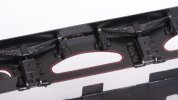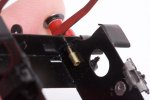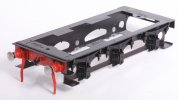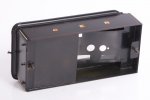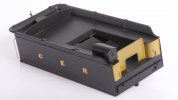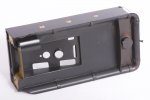spikey faz
Western Thunderer
Is it possible the 'hard stop' has shifted the quartering on one of the wheels?'Blackwater' threw a crankpin screw at NEEGOG last weekend. Amazingly, she ran on for another 20 feet or so before coming to a very abrupt stop. Even more amazingly, someone found the crankpin where it fell.
View attachment 187147
This isn't really an ideal design, the side rods are forever trying to loosen the crankpin screws on one side and the action swaps sides every time the model changes direction.
View attachment 187148
This is the underneath in case anyone is interested to see inside a Minerva Manning Wardle. The pickups are usually concealed by the wheels so I took the chance to clean them.
View attachment 187149
Everything is back together and working. The loco still runs forwards perfectly but has developed the tiniest tight spot running in reverse. I think the hard stop has put a bend in one of the two rear side rods but I cannot see anything amiss. I have eased both rods outwards a few thou', the tight spot is almost gone but it is still there. Running is perfect on a feedback controller.
The side rods are too slender to let me put in some Slater's crankpin bushes. I have secured all six screws with Loctite, I don't like doing this or even recommend it but this fault has happened before and I want to stop it happening again.
Oh, and Slaters do a smaller crankpin bush as supplied with their smaller diameter wheels. I converted a Minerva Hudswell Clark to Scaleseven using Slaters wheels (turned by Col) and I was able to re-use the Minerva coupling rods (which are fairly slim) with the Slaters smaller bushes.
Mike
Last edited:










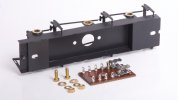

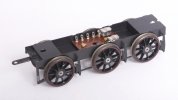
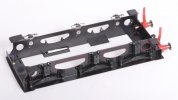
 . It's a bit late to get the torch out so I put a narrow bead of the epoxy along the inside of the gap. I used masking tape to keep this tidy.
. It's a bit late to get the torch out so I put a narrow bead of the epoxy along the inside of the gap. I used masking tape to keep this tidy.